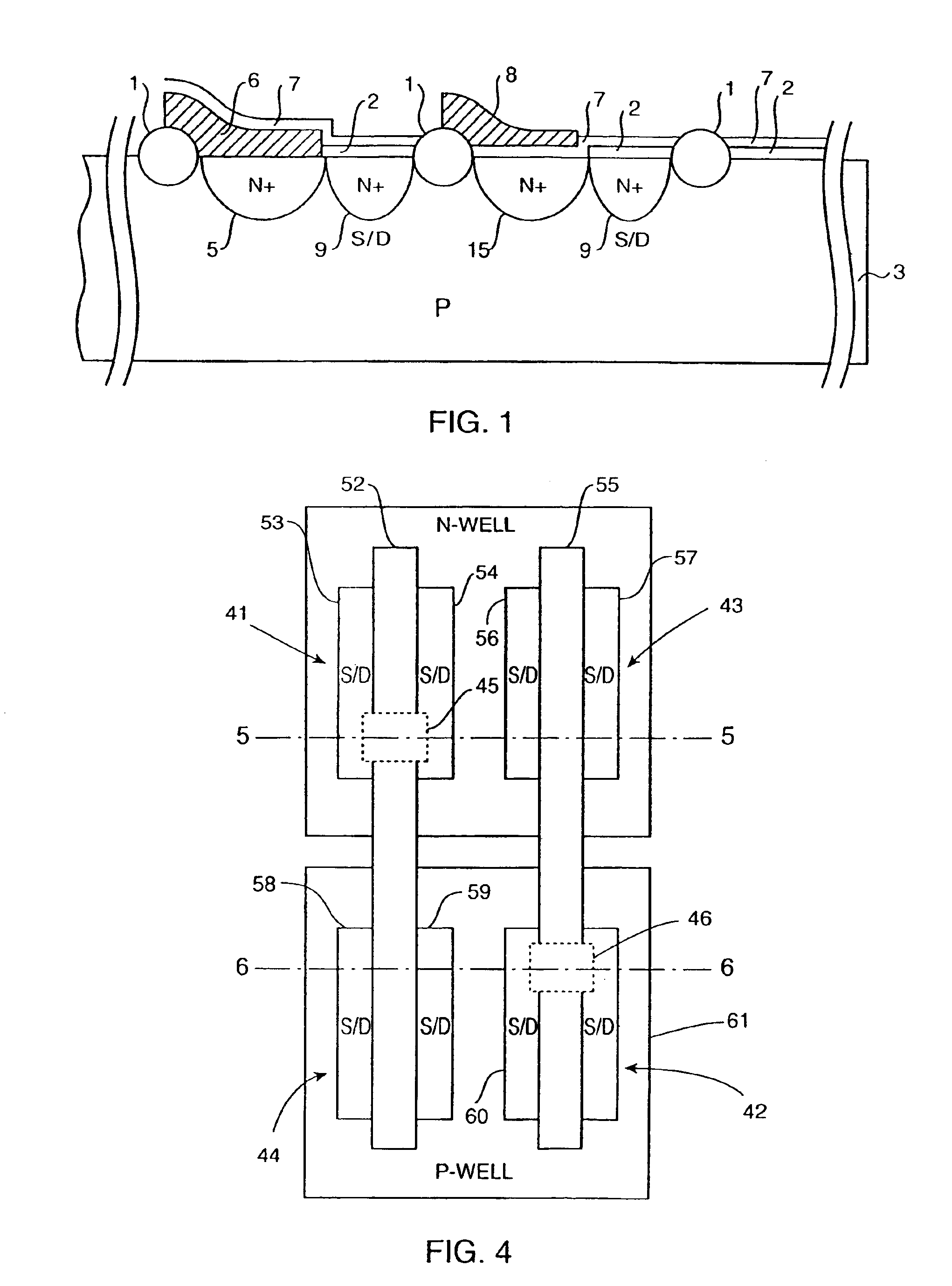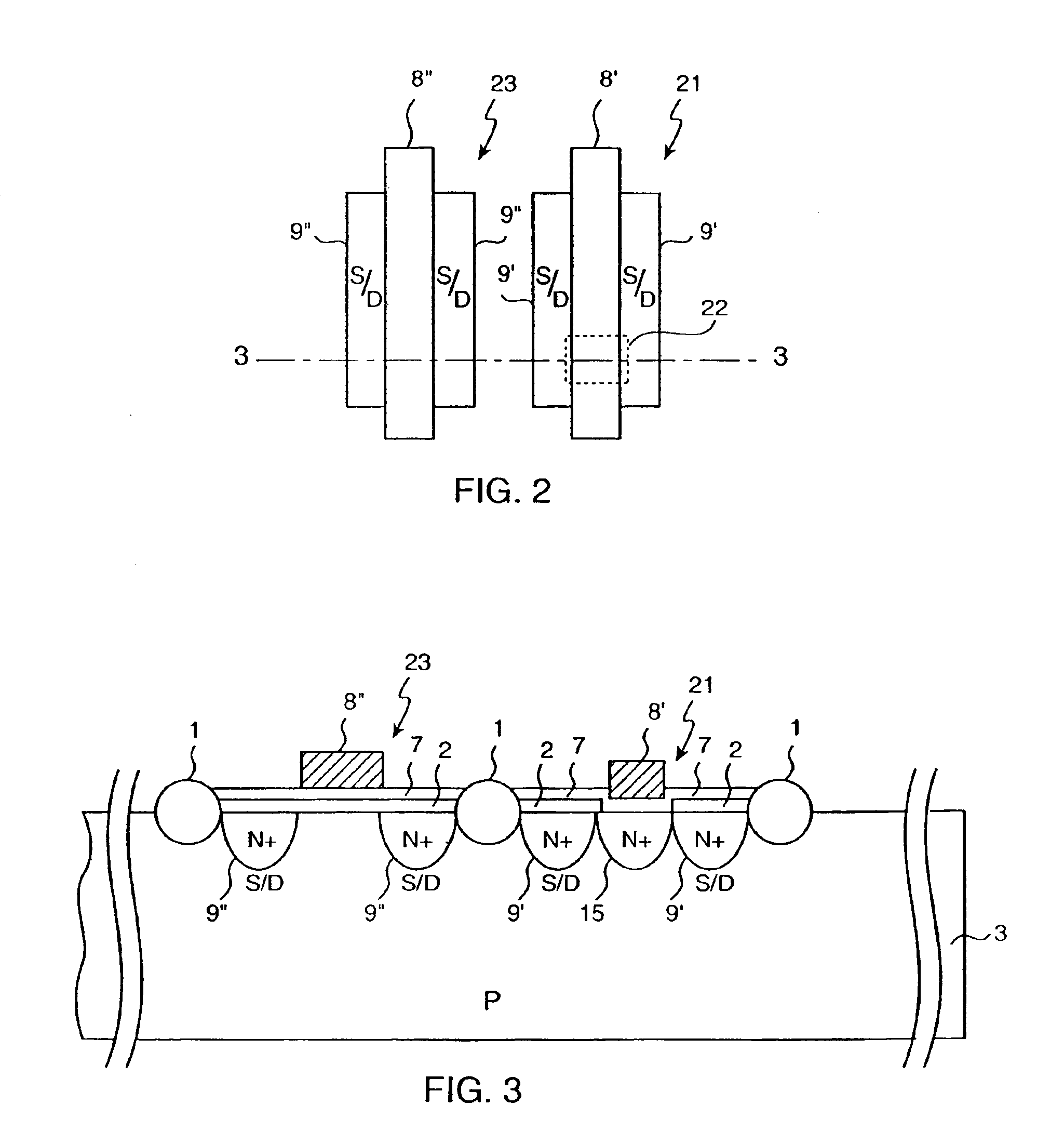Permanently on transistor implemented using a double polysilicon layer CMOS process with buried contact
a polysilicon layer and permanent transistor technology, applied in the direction of semiconductor devices, semiconductor/solid-state device details, electrical equipment, etc., can solve the problems of high cost, many man-hours of highly skilled professionals, and the effect of integrating circuits
- Summary
- Abstract
- Description
- Claims
- Application Information
AI Technical Summary
Benefits of technology
Problems solved by technology
Method used
Image
Examples
Embodiment Construction
[0029]Reference will be now made to the drawings that are shown for the purpose of describing the preferred embodiment of the invention and not for limiting same.
[0030]In the following FIGS. 1 to 3 the N-type buried contacts are shown, i.e. a P-well silicon region having N+ type buried contact implants and N+ type source / drain active regions. Similarly, P-type buried connections will require P+ type source / drain connections and P+ type buried contact implants.
[0031]In a double polysilicon CMOS process with buried contact, the buried contact is usually opened with masking and doped with the appropriate (i.e. N+ or P+ depending on the type of transistor) implant after the first gate oxide growth. A first layer of polysilicon is deposited to make connection to the source and drain area in the buried contact. The first layer of polysilicon can also be used to form the gate of the transistor with the first gate oxide.
[0032]In an EEPROM circuit, the first layer of polysilicon is used as t...
PUM
 Login to View More
Login to View More Abstract
Description
Claims
Application Information
 Login to View More
Login to View More - R&D
- Intellectual Property
- Life Sciences
- Materials
- Tech Scout
- Unparalleled Data Quality
- Higher Quality Content
- 60% Fewer Hallucinations
Browse by: Latest US Patents, China's latest patents, Technical Efficacy Thesaurus, Application Domain, Technology Topic, Popular Technical Reports.
© 2025 PatSnap. All rights reserved.Legal|Privacy policy|Modern Slavery Act Transparency Statement|Sitemap|About US| Contact US: help@patsnap.com



